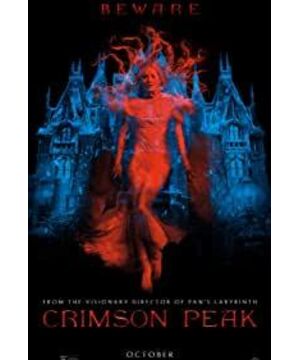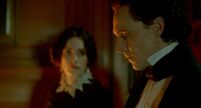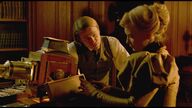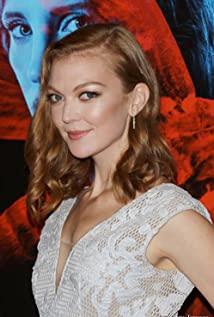Starting with his film debut "Devil's Silver Claw", Guillermo del Toro, one of the three great Mexican filmmakers, has shown audiences unparalleled creativity over the past two decades. "House of Ghosts", "Hellboy", "Pan's Labyrinth", "Bad Pacific", "The Shape of Water", horror, fantasy, magic, sci-fi; wizard, vampire, monster, super Heroic; he even served as a screenwriter for the "Hobbit" series, with a variety of styles and changing styles. It can perfectly control so many themes and so many non-human characters, and can accurately reflect its spiritual world through the shape of the characters, building a movie world for the audience that travels between real time and space and legends of gods and monsters, which shows its extraordinary director. talent.
Born in Mexico, Gilmour is deeply influenced by the magical realism rooted in Latin American culture, and at the same time has a preference for Spanish art styles, especially Goya's Noir series of oil paintings, so his films are often self-contained. On the one hand, it has a bizarre, magical and coquettish visual performance, on the other hand, there is no lack of romance and poetry in the dark and evil. Especially in his horror films, he can find the shadow of old-fashioned horror films, and is full of gorgeous and unique atmosphere. Huan's "Black Fairy Tale".
"Scarlet Mountain" is another ghost horror work by Gilmour after "Ghost House". However, unlike "Ghost Boys' Home," which reflects the Spanish Civil War and has strong anti-war sentiments, "Scarlet Mountain" is more traditional, retro, and typical of Gothic texture, and was declared by the director as one of his three favorite movies. . From the title of the film, Gothic elements permeate the film, and the word "scarlet" literally creates a psychological image of blood and death. In terms of visual symbols, whether it is the elegant and luxurious Victorian costumes, the cold and dilapidated beauty of the old castle, and the weird ghosts floating around, all of them have a distinct Gothic style and reflect Gilmour’s The ingenuity of its team.
Among them, Gilmore devoted the most effort to the dark castle of the Sharp family. The spooky castle and the mysterious villa have always been Gilmour's favorite. Fans who know a little about him must know that his "Desolate Villa" on the outskirts of Los Angeles is filled with all kinds of strange objects, installations, paintings, biological models, and mechanical toys. An exotic world of mysticism and gothic flair. For the sake of realism, Gilmour did not use any special effects in "Crimson Peak", and all the sets and props were customized. For example, the large chandelier in the living room has been made for four months. Gilmour was also adamant against using a green screen, he wanted to make every floor of the house feel different, and there were many specially-caught butterflies and sunset moths flying around.
Of course, Gothic aesthetics are also reflected in the film's narrative, such as using themes of darkness, fear, loneliness, and despair to depict the edge of the sacred and evil in the inner world, as well as the struggle between love and despair. On this level, Gilmour's unique vision, detail control and extraordinary narrative skills have been vividly displayed. Through color, sound, props, and various other carefully set details to create a poignant and eerie atmosphere, and convey to the audience a sublime and fearful psychological beauty. This kind of beauty is the core of Gothic aesthetics.
During the viewing process, there has always been a feeling of deja vu. It reminds me of reading a selection of world fairy tales when I was a child, there is a story called "Bluebeard". Later, I rummaged through the box and found it, and the basic framework of this film is indeed a bit of the shadow of "Blue Beard". This fairy tale originated from a French folk tale. Although many versions have been derived since then, the main idea is to tell a dark fairy tale about a nobleman named "Bluebeard" who specially lured women into marrying him and killed his wife continuously. The main plot begins when Bluebeard gives his new wife the keys to his house before he leaves the house, and tells her not to open the lowermost room of the castle. However, one day the girl finally couldn't hold back her curiosity, opened the mysterious room, and discovered Bluebeard's secret: there was blood all over the floor, and the bodies of his ex-wives were hanging there. Eventually, before Bluebeard executes the girl, her two brothers arrive just in time to kill Bluebeard.
As a famous literary prototype, "Bluebeard" has been used for reference in many works of art, such as Charlotte Bronte's "Jane Eyre", and Hitchcock's "Butterfly Dream" and so on. In the original story, the "key" that opens the mysterious room can be extended to male power in marriage and family. Although the girl was eventually rescued, the cause was still that she made a huge mistake. She was a passive, ignorant and helpless person. character of. This has fundamentally changed in "Jane Eyre". Even though it has a gloomy atmosphere, Jane Eyre has become an image of a woman who is unwilling to be humiliated, dares to fight, and pursues freedom and equality.
In Crimson Peak, Gilmour also fuses the essence of traditional storytelling with modernity. First of all, the male image of "Bluebeard" is weakened. The cruel and ugly middle-aged Bluebeard in the prototype has become Thomas Sharp, a handsome young man played by Hudson. His sensibility, weakness and conscience have not been wiped out. The real "Bluebeard" is his sister Lucille, who suffered from a mental illness after being abused by her mother as a child, then killed her mother, and maintained an incestuous relationship with her brother Thomas. And for the livelihood of the manor, the two continued to conspire to embezzle the property of the rich lady through the marriage of their younger brother. In this deformed sibling relationship, Lucille reigns supreme, a symbol of desire, power and evil.
Secondly, the wife in the prototype becomes Edith with independent thinking and a sense of resistance in this film. Although she came from a wealthy family, she is stubborn and contemptuous of the powerful. She is a writer with the seeds of feminism. Unlike in the original story, she is the richer and more emotionally active, which is reflected in the position in which she kisses Thomas and makes love. At the same time, when she discovered the secret of the castle and was threatened by Lucille, she did not appear weak and helpless.
In Gilmour's film universe, there is never a moral judgment on those non-human characters, they are a matter of course and natural. There was such a narration in "Ghost Boys' Home": "What is a ghost? A tragedy destined to repeat itself? Or maybe it's a moment of pain. It's something that's already dead, but sometimes it seems to be alive. It's a kind of Emotions that stop in time. Like a blurry photo, or an insect trapped in amber." In "Crimson Peak", Gilmour once again defined ghosts - "Ghosts are real Yes. They are stuck in a place for some reason, just like we are. Some ghosts are bound by a place, some by a time, or bloodshed, terrible crimes. But some are driven by feelings, obsessions , loss, revenge, or love, those ghosts never leave." Even though Lucille was evil and ended up being a ghost, Gilmour gave her the solitude of staying in the room and playing the piano forever. figure. With the narration, can you feel the director's sympathy and lament for the "ghost"?
♑
View more about Crimson Peak reviews











